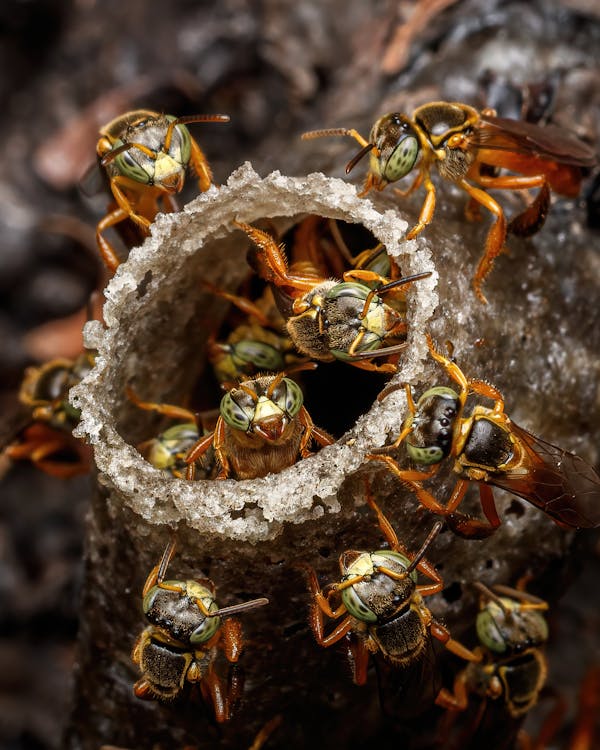When most people spot a big, buzzing hornet flying around their backyard, their first reaction is usually panic. And understandably so—hornets are large, fast, and known for painful stings. But have you ever stopped to wonder what goes on behind the scenes in a hornet colony? Do they have a queen, like bees and ants? The short answer is—yes, they do. And that queen plays a very important role.
In this blog, the team at wasp control in Melbourne breaks down what the queen hornet does, how hornet colonies work, and why this information is key when it comes to proper wasp and hornet removal. If you’re dealing with unwanted hornets on your property, understanding their colony structure could make all the difference.
Hornets Do Have a Queen
Just like bees, hornets have a queen. She’s the central figure in the colony and is solely responsible for laying eggs and starting the colony from scratch every season.
In early spring, after surviving the winter alone in hibernation, the queen hornet wakes up and starts searching for a new place to build a nest. This could be in a tree hollow, roof eave, shed wall, or even inside a wall cavity. Once she picks her spot, she builds a small nest and lays her first eggs. These hatch into the first batch of worker hornets—who will later take over the building and foraging so the queen can focus on laying more eggs.
As the weeks go by, the colony grows, and the queen becomes less visible. But she remains deep in the nest, laying hundreds of eggs that turn into more workers, males, and eventually new queens.
Why the Queen Hornet Matters
The queen is the powerhouse of the colony. Without her, the hornets can’t survive or grow. She’s not just responsible for making more hornets—she also controls the behaviour of the workers through pheromones (a kind of chemical message). These pheromones keep the workers sterile and focused on their jobs.
If the queen dies, things go haywire. The colony can collapse or, in some cases, a worker may start laying eggs—but these eggs usually develop into males only, not new workers or queens.
So, when tackling a nest, the goal isn’t just to eliminate the visible hornets flying around—it’s to make sure the queen is dealt with too. That’s where professional wasp nest removal services in Melbourne come in.
If you’re seeing a lot of wasp or hornet activity around your property—especially in spring or early summer—it’s very likely there’s a queen nearby that’s already started building her colony.
During this early phase, hornets are easier to manage. The nests are smaller, there are fewer worker hornets around, and removing the queen at this stage can prevent the colony from growing into a dangerous swarm later in the season.
That’s why we encourages people not to ignore early signs. A single queen now could mean hundreds of aggressive hornets later.
What Does a Queen Hornet Look Like?
Spotting a queen isn’t always easy, especially once the nest is established. However, here are a few signs that can help:
- Size: Queen hornets are usually larger than the workers—by a few millimetres.
- Time of year: If you see a hornet flying solo in early spring, it’s likely a queen starting her nest.
- Behaviour: Queens will often be seen flying low, inspecting sheltered spots or eaves for nesting.
Once the colony is up and running, it’s much harder to see the queen, as she rarely leaves the nest.
The Danger of Ignoring a Queen Hornet
Here’s the thing: one hornet might not seem like a big deal, but one queen means a colony is forming. By late summer, a single nest could house hundreds of hornets—each ready to defend their home with painful stings.
Hornets are particularly dangerous for children, pets, and people with allergies. Even those without allergies can suffer multiple stings, which are incredibly painful and can cause swelling, dizziness, and discomfort.
That’s why early detection and proper wasp nest removal services in Melbourne are so important. It’s not just about comfort—it’s about safety. It’s tempting to grab a can of insect spray and try to handle a wasp or hornet nest on your own—but this can be incredibly dangerous. Hornets can become aggressive very quickly when they feel their nest is under attack.
Unlike bees, hornets can sting more than once, and a group of them defending their nest can quickly lead to serious injury. It’s not worth the risk.
Professional services use protective gear, specialised tools, and safe insecticides to treat and remove nests. More importantly, they know how to locate and eliminate the queen to stop the cycle altogether.
How Professionals Remove Hornet Nests
Here’s how a professional typically handles the job:
- Inspection: They assess the location of the nest and look for signs of queen activity.
- Identification: They confirm the hornet species—since different types require different treatments.
- Treatment: They apply targeted, eco-friendly insecticides that neutralise the hornets, including the queen if she’s present.
- Nest Removal: Once the hornets are inactive, they remove the nest to prevent return or reuse.
- Prevention Tips: They offer advice on how to make your property less attractive to hornets in the future.
This entire process is handled with care, safety, and a deep understanding of hornet behaviour—something that makes all the difference.
If you’ve seen increased hornet activity around your home, it could mean a queen is nearby and getting ready to build. Now’s the time to act. We offer safe, reliable, and affordable wasp nest removal services Melbourne-wide, protecting families, pets, and businesses from the dangers of hornet infestations. Call Wasp Control Melbourne today on 03 9021 3738 to book an inspection or request emergency wasp removal. Quick action now could save you a lot of trouble later on.




